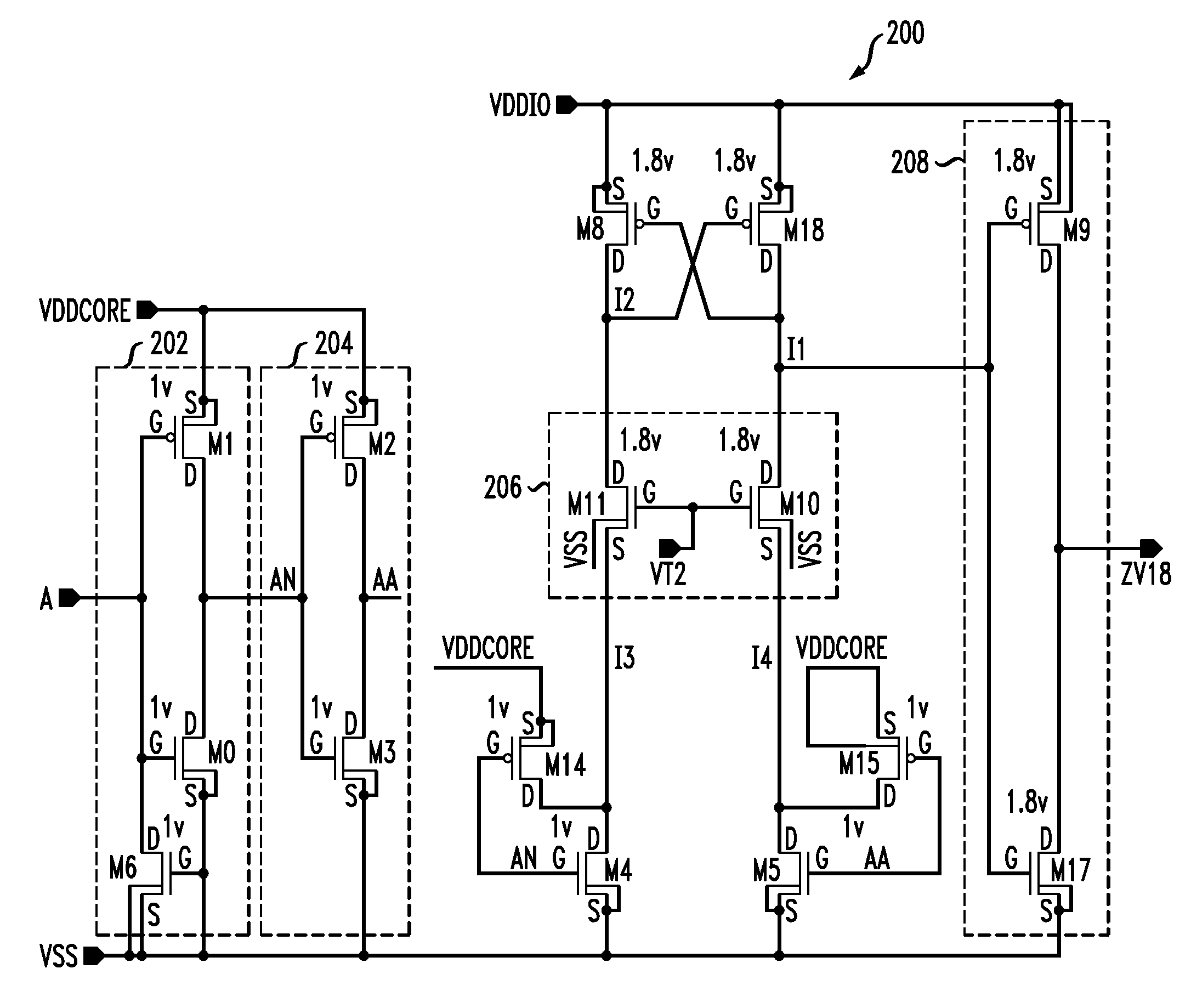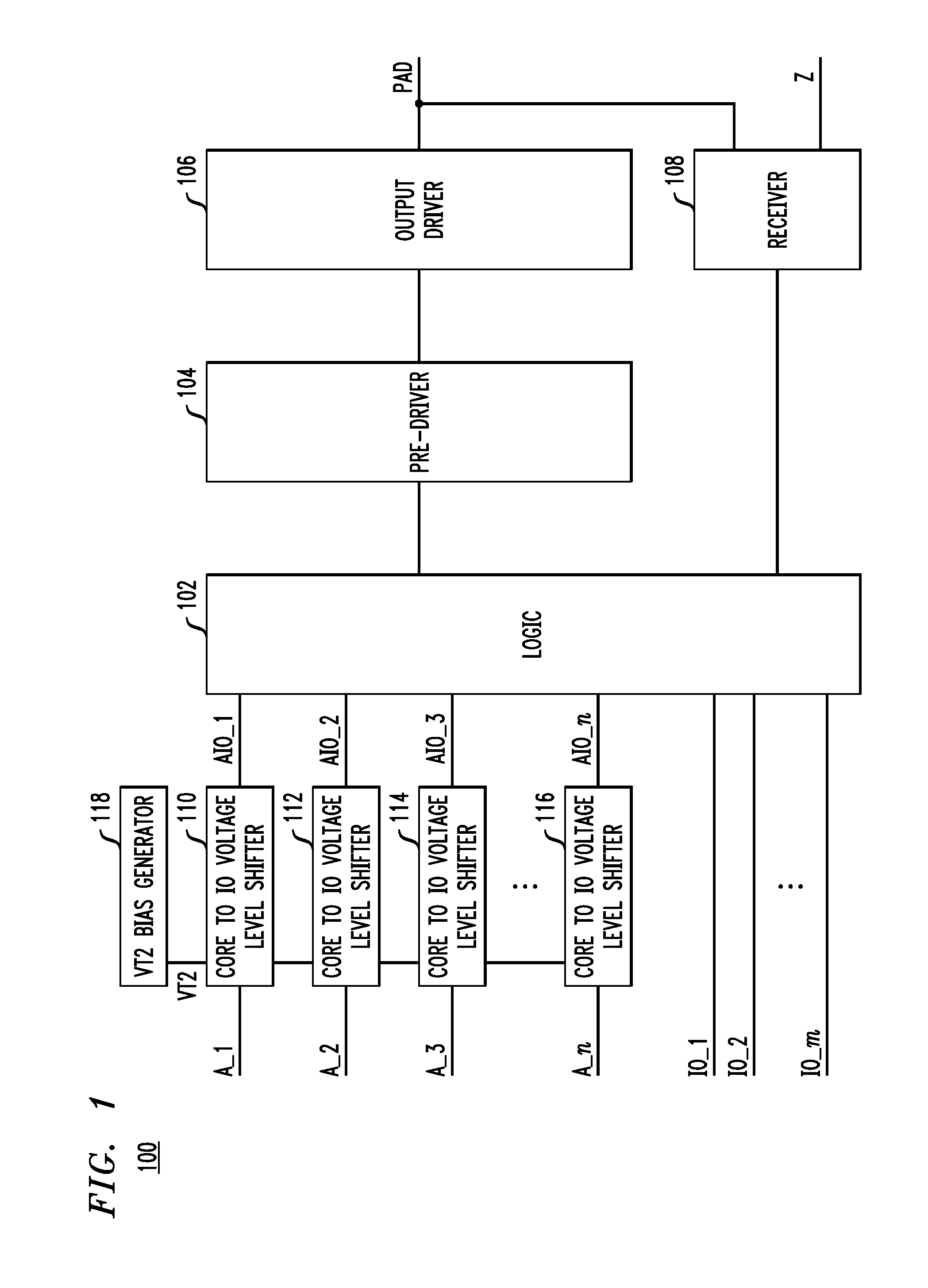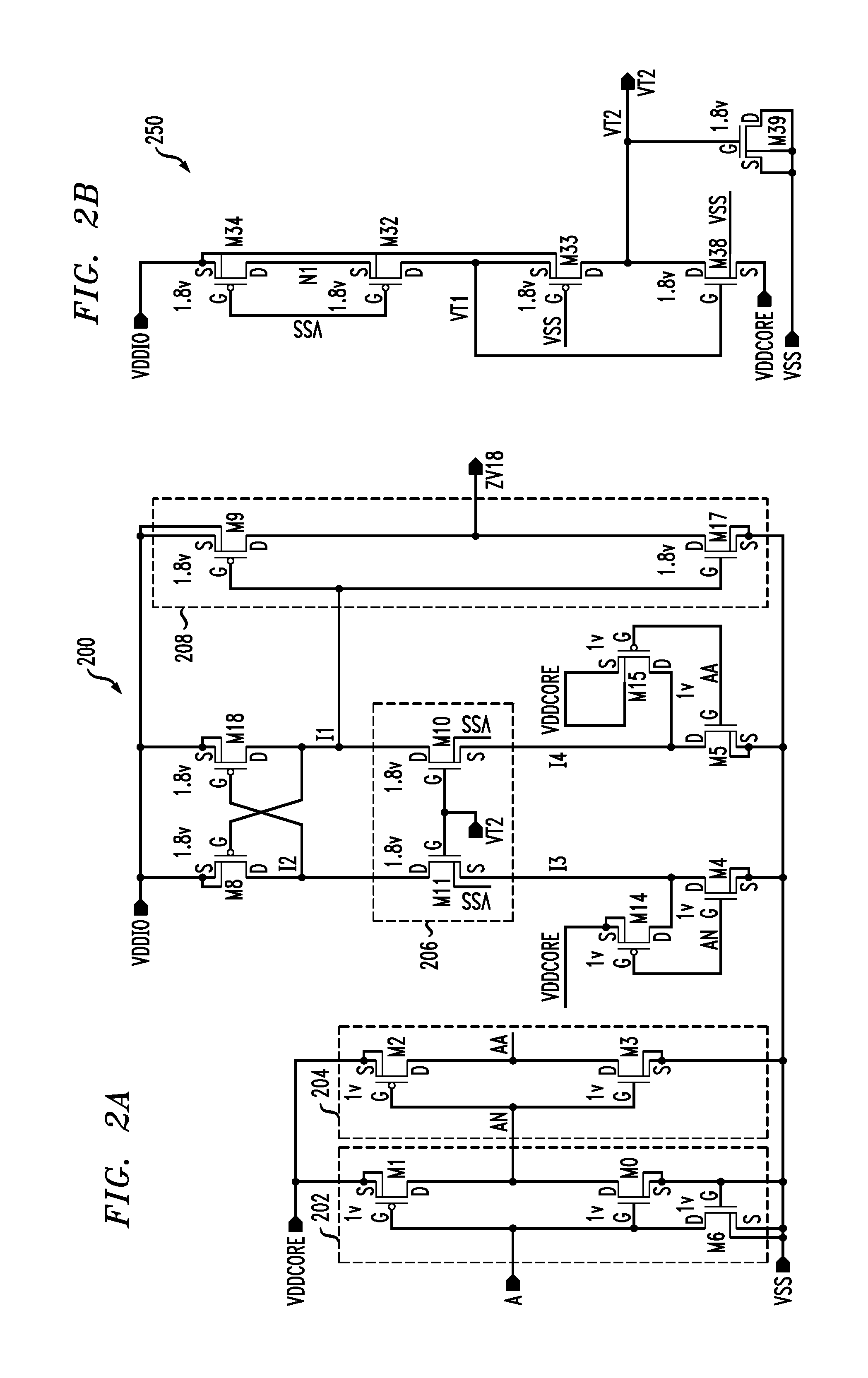Mode Latching Buffer Circuit
- Summary
- Abstract
- Description
- Claims
- Application Information
AI Technical Summary
Benefits of technology
Problems solved by technology
Method used
Image
Examples
Embodiment Construction
[0018]Principles of the present invention will be described herein in the context of illustrative I / O buffer circuits and voltage translator circuits. It should be understood, however, that the present invention is not limited to these or any other particular circuit arrangements. Rather, embodiments of the invention are more generally applicable to a buffer circuit architecture which offers full functional modes of the buffer circuit even when a core voltage supply to the buffer circuit is powered down or otherwise disconnected from the buffer circuit. A buffer circuit according to aspects of the invention is able to provide full functional modes when the core voltage supply is powered down using a substantially reduced set of control signals, thereby beneficially eliminating various disadvantages of standard approaches, including, but not limited to, layout routing congestion and design complexity. Moreover, it will become apparent to those skilled in the art given the teachings h...
PUM
 Login to View More
Login to View More Abstract
Description
Claims
Application Information
 Login to View More
Login to View More - R&D
- Intellectual Property
- Life Sciences
- Materials
- Tech Scout
- Unparalleled Data Quality
- Higher Quality Content
- 60% Fewer Hallucinations
Browse by: Latest US Patents, China's latest patents, Technical Efficacy Thesaurus, Application Domain, Technology Topic, Popular Technical Reports.
© 2025 PatSnap. All rights reserved.Legal|Privacy policy|Modern Slavery Act Transparency Statement|Sitemap|About US| Contact US: help@patsnap.com



